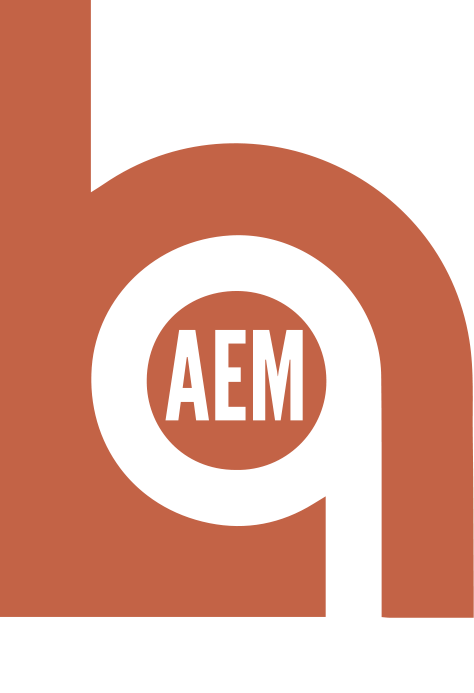Top 10 Hottest Features in Adobe Experience Manager 6.4: Sites
What's New in AEM 6.4 for Sites Users?
by Peter Nash

Adobe Experience Manager 6.4 had its GA release a week after Summit, much sooner than it ever has. It’s like they are getting better at it. :) As in years past, I had the chance to attend “Adobe Experience Manager Sites: Top 10 New Innovations” that was presented by Cedric Huesler, Director Product Management AEM Sites, and Mathias Siegel, Senior Product Manager AEM Sites Team. Below is their Top 10 list of new features, with some added commentary from me. If you have been part of the beta program then you might already be familiar with some of these. Let’s dive in.
1. Experience Fragments Building Blocks - Experience Fragments are one of the most important features driving fluid experiences in the digital content world. As a reminder, they are different from Content Fragments. Here is a good breakdown of their differences, from Adobe. Now with Experience Fragments you can create variations and versions for use in different channels, reinforcing the idea of content reuse. Their name for this is called Building Blocks. The idea is that you have your Experience Fragment, you convert it into building blocks and then you can create a bunch of variations of Experience Fragments using those building blocks. Thus allowing you to create as many variations of the Experience Fragment as you need. They are linked together so when you make a change to one you will see that flow down to all the others. I’m curious if you can disinherit them from each other. Something worth checking.
2. Style System Theming Redefined - This is a great enhancement to the Touch UI for AEM. But it’s not technically new for AEM 6.4. This was made available last year in 6.3. A quick explanation in case you are new to it: “The Style System allows a template author to define style classes in the content policy of a component so that a content author is able to select them when editing the component on a page. These styles can be alternative visual variations of a component, making it more flexible.” We were doing this back in Classic UI by giving authors a “display as” drop down option to make, something like the List Component, display a certain way. The controls are a bit different, but the effect is the same. Here is the documentation for 6.3 from Adobe and the documentation for 6.4. Basically the same. Also, here is a video and some notes about how to code for Style System.
3. Smart Crop powered by Adobe Sensei - Cropping images can be a pain, pure and simple. And there wasn’t a really great way to do it for the authors in older versions of AEM. Now Adobe has a tool that will automate this for your authors, using Adobe Sensei. When a new image is uploaded to the DAM, the Smart Crop will make a determination as to what the “important” area of focus should be. And then based on all your preselected image resolutions it will create the renditions. Thankfully, especially for those that distrust computers, authors have the capability to go review each rendition and make adjustments to the image to ensure it is correct. Joey seemed a little lackluster about it in his write up of the Assets top features, but I think this is a great improvement for the majority of content authors who need to worry about all the places that images will display on their site (especially when designers didn’t bother to think about it when the site was originally created and expect developers to just magically make it all work). Super jazzed about this.
4. Smart Layout powered by Adobe Sensei - According to Cedric and Mathias, this was the most ambitious thing to be added to this release. The idea is that you allow Adobe Sensei to serve different page layouts on the fly, based on analytics data and tools from Target. Now you don’t have to fight over which thing gets served at the top of the page. Just use the Smart Layout container, put in your content, and then the machine can take over. Interesting idea. I would be curious to talk to someone who actually uses it. Though it didn’t sound like it would be available for everyone to use for a while. Last note, in order for this to work, you must make sure that your Analytics and Target are configured correctly. It’s magic, but not that magical.
5. Adobe Launch Integration in AEM - Adobe Launch is now integrated into AEM, which is nice because Launch is available to all Adobe clients. Launch now has an API that allows it to talk to AEM behind the scenes, which means that AEM can actually tell Launch that something has changed on the site. Launch should also help to alleviate the headache of getting other Experience Cloud products connected and configured. Because, as a reminder:
“Nothing will work unless it is properly configured.” - Captain Obvious
6. Reverse Translation Memory Update - Admittedly, I’ve not worked much at all with language translation in AEM. So this new update sounds good but I have no idea if it is really solving any problems. The idea is that users (local web producer) can make a change to bad content (something poorly translated) and have it feed back to whatever Translation Management System is used to prevent the same translation mistakes from happening over and over again. Reverse Translation Memory Update is the process for using the AEM Translation API to notify the upstream system of the issue which was fixed. Apparently this is something they have wanted to address for a few years. So good for them for finally addressing it.
7. Content Fragments Content Models - Content Fragments are bite-sized or chunked up pieces of content that make content reuse much more possible. But they were almost exclusively text based, with references to assets. Now they have been injected with steroids, allowing users to have a variety of component types added to the Content Fragments, and potentially built by authors, based on permissions. This is Adobe’s answer to Scaffolding in the Classic UI. I have written about the importance of Scaffolding in the past, and I still think that there is a good case to be made for it. So while this isn’t the same, I am glad that they have finally made some consideration for this.
8. Single Page Application (SPA) Editor - This is interesting, but honestly a little backward of an approach to handling web content management in AEM, IMO. My reasoning for saying this is that this will require a lot more involvement by the development team and renders some of the Template Editor functionality useless. Maybe one day in the future that can be woven back in. For now you do have some controls to manipulate the page layout, a bit. And how do search engines handle this page of content when, as the presenters point out, there is nothing in the page source beyond a few references to some JavaScript files? That will need to be solved. But I am glad that Adobe is making accommodations for this type of development as there have been some rumblings from customers about the desire for such a thing. It shows that Adobe listens. As Cedric mentioned, there is currently a beta program happening right now regarding SPA’s and AEM which we will probably report on. Right now, we can’t talk about it beyond what this presentation shows. But this tool does give you the chance to edit content using the AEM dialogs because you link the SPA components up to AEM components.
9. AEM Screens Content Bulk Deployment - I have been dismissive of Screens for a long time. Probably undeserved, since most of my involvement with AEM is specifically for the web channel. This year at Summit I actually met two people who are actively working on AEM Screens. It’s a viable channel. So having some more controls for being about to avoid manual and repetitive tasks when delivering content to AEM Screens, can’t be all bad. ”I have 10k screens, do you really want me to create 10k configurations to manage those deployments?” No!
10. Cloud Manager for AEM - So this is something that is really only available to customers of Adobe Managed Services. But the idea is, if you want to release your code more often, and manage your environments, control the entire CI/CD pipeline, then this gives you insight and control into how Adobe Managed Services manages your instances. Cloud Manager has CI/CD preconfigured and automated - the only thing you have to deliver is the source code, then AEM Cloud Manager takes over and performs unit tests, code/security scanning, performance testing. Sounds good, but I will be interested to see how this works in practice.
I recommend you watch the entire session online at Adobe’s Summit site. All you have to do is click the Sign In button at the bottom and fill out one of their lead gen forms. Let us know what some of your favorite features of AEM Sites 6.4 are.
